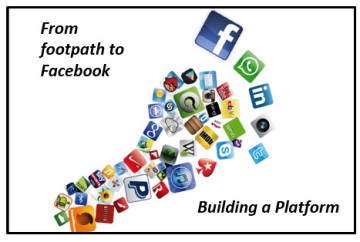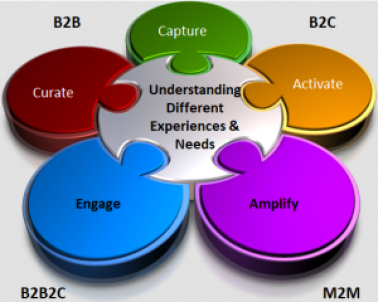 I’ve been interested in what constitutes a “platform” and how platforms spawn and nurture ecosystems for quite some time. We’ve been exploring these ideas in this blog over the last few months.
I’ve been interested in what constitutes a “platform” and how platforms spawn and nurture ecosystems for quite some time. We’ve been exploring these ideas in this blog over the last few months.
In this post I’d like to start identifying some of the key factors that anyone thinking about innovating or building a platform must consider. To do that, I’d like to start, as the title suggests, by reviewing the first platforms.
The first platforms were paths, rivers and other means of improving human interaction and communication. As interactions were improved and information flowed more easily, civilization, which is just a form of an ecosystem on a platform, developed. Roads, canals and other forms of improved transportation simply became a better platform, and allowed the Romans to create financial and trade mechanisms not equaled until the 19th century. Continue reading
 I have put some focus back on the platforms recently, as this is becoming a real imperative to understand the whole meaning and implications of platforms, with the necessary management they require, so as to enable us to rethink different business models for the future.
I have put some focus back on the platforms recently, as this is becoming a real imperative to understand the whole meaning and implications of platforms, with the necessary management they require, so as to enable us to rethink different business models for the future. Many innovators are familiar with the concept of the
Many innovators are familiar with the concept of the  There are significant differences between the ecosystems we might consider. Let’s reflect a little here, some recap and explore some further thoughts.
There are significant differences between the ecosystems we might consider. Let’s reflect a little here, some recap and explore some further thoughts.
 In case you were hibernating or out of range of cell cover or WiFi during the last few days, you know that Amazon has made an offer to acquire Whole Foods.
In case you were hibernating or out of range of cell cover or WiFi during the last few days, you know that Amazon has made an offer to acquire Whole Foods.

 Our experiences determine to a large degree, success or failure. When you are reliant on others to collaborate and exchange knowledge, for the better good, you need to make sure there is a consistent validation process.
Our experiences determine to a large degree, success or failure. When you are reliant on others to collaborate and exchange knowledge, for the better good, you need to make sure there is a consistent validation process. Jeffrey wrote a recent post “
Jeffrey wrote a recent post “